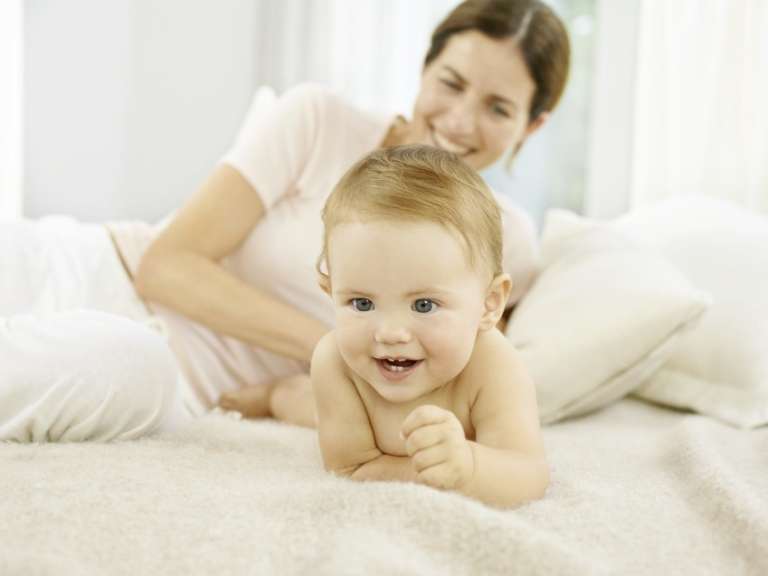What care does the nappy area need?
As the skin in the nappy area comes into repeated contact with urine and faeces, and is warm and damp, it can quickly become irritated or inflamed. I recommend cleaning with warm water and some oil, then carefully drying the skin by patting.
It’s also good to allow the area to come into contact with the air, for example letting the baby wriggle around naked for a while. If the skin becomes red, a special cream should be used. Thanks to its mixture of a soothing calendula extract and zinc oxide, the Weleda Calendula Nappy Change Cream is popular in my practice for protecting and strengthening the skin.
How can redness and rashes on the bottom be alleviated?
Throughout the time your baby wears nappies, little spots and pustules, and slight or severe redness can appear on her bottom, and can often cause pain. When this is the case, children often dislike having their nappy changed, but cleaning the area is very important. Using soft cloths, for example cut up muslins, can make the cleaning more comfortable for the baby. In this case, I also recommend cleaning the skin first with lukewarm water then with oil. The oil leaves a soft film on the skin, making the next nappy change a little more comfortable for the baby and caring for the skin.
While the irritation continues, change your baby’s nappy at least every two hours and several times in the night. After cleaning your baby’s bottom, you can also apply a cream with natural oils and zinc oxide once or twice per day. This helps the skin regenerate quickly. Allow the skin to breathe as much as possible. For my children, I cut the nappy area out of some woollen tights for this time, so their tummies and legs stayed warm, but air could reach their bottoms. If the soreness lasts more than two days or you are unsure, ask your midwife or paediatrician for advice. It can be more common in the first weeks and months - but don’t hesitate to ask for advice and help.
For more information about Weleda's products click here



